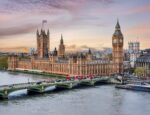Kevin Poole, general manager of the Insurance Managers Association of Cayman, talks through the process of forming a Class B captive and Class C cat bond or special purpose insurer in the Cayman Islands
Forming and licensing an international insurance company in the Cayman Islands is a relatively straightforward and familiar process in the context of the global captive insurance industry.
For this article, the focus will be on Class B licences issued to captive insurance companies and Class C licences for catastrophe bonds or special purposes insurers.
Many of the steps required will be similar to those required in other major captive domiciles. The Cayman Class B licence class is split into three sub-categories: Class B(i) is for single parent licensees where at least 95% of net premium written will need to originate from the insurer’s related business.
A B(ii) licence requires over 50% of net premium originates from the insurer’s related business, while the B(iii) licence is used where 50% or less is related business.
Class C licences are exclusively for limited recourse and fully collateralised transactions, namely ILS structures such as catastrophe bonds.
Each licence class is required to maintain a minimum and prescribed capital requirement as set out overleaf.
Both the Cayman Islands Monetary Authority (CIMA) and any advising insurance manager would suggest clients exceed the minimum requirement at licensing, to ensure the business written is fully supported and sufficient funds are on hand for ongoing expenses.
Pre-licensing
Prior to licensing, many companies commission a feasibility study to determine the potential captive’s viability. In addition to analysing the proposed ownership structure, captive type and business to be written, the study will consider programme design and domicile along with potential collateral requirements. Financial pro formas will also be included, with various loss scenarios stress tested and recommended insurance managers identified.
The completed feasibility study then forms the basis of the regulatory submission to CIMA. In some cases, a proposed captive owner may move forward with a feasibility light option focusing more on financial results as location and lines of business may have already been determined.
Although a feasibility study is not mandated in the Cayman Islands, it is highly recommended. Prior to formation, any proposed captive owner should seek independent tax advice to ensure the ownership structure is agreed and understood.
In Cayman, the captive will have the choice to be a CFC or take the 953(d) election, which will be an important consideration for tax counsel to discuss.
Another consideration is the name of the captive, which is often called after the parent company. Where the words “insurance” or “reinsurance” are included in the name, a letter of “no objection” is required from CIMA, which is sent to the Registrar of Companies along with the proposed memorandum and Articles of Association.
This part of the licensing process is normally handled by a local law fi rm who will form the company. CIMA encourages prospective licence holders to visit Cayman and meet with them and the proposed service providers.
These prudential meetings allow pre-licensing questions to be dealt with from both sides and the process encourages ongoing cooperation between licensees and the regulator.
Types of structures
Important consideration should also be given to the preferred type of structure. Captives in Cayman can be structured as single parent, group captives, a cell company (segregated portfolio company, SPC) or even with an incorporated cell structure (portfolio insurance company, PIC). Smaller owners may just want a segregated portfolio in an established SPC.
Each have particular implications, but thought during the feasibility phase should be given to future requirements that may need to be addressed. Captives may start operation as a single parent but then need cells in the future.
Domicile considerations will then be paramount, as not all domiciles provide such flexibility and some only permit limited writing of third-party business.
Cayman’s insurance law is unique, defining related business as “originating from the insurer’s members or the members of any group with which it is related through common ownership or a common risk management plan”.
This means group captives and non-employed physician programmes are all considered related business and can obtain a B(i) licensee, usually reserved for single parent captives.
Business plan
The business plan should provide full details of the ownership and directors and officers, as well as the insurance programme, fronting carrier(s) and reinsurance arrangements, along with the investment policy, proposed service providers and capital provided.
This document should be clearly written as any changes post licensing will require regulatory approval.
Capital requirements and collateral requirements
As mentioned, minimum and prescribed capital requirements are set out in the insurance law and based on the insurance programme, it is likely that capital will need to be higher than the minimum.
This can be factored into pro forma financials and should be addressed in the feasibility study. The business plan will detail the proposed capital and outline why it is felt to be sufficient.
In addition to capital, if the programme is fronted the carrier is likely to require some form of security to match expected losses, which can be in the form of cash, funds withheld, a 114 Trust or a letter of credit.
The cost of fronting should also be considered as charges can differ between carriers. Some will include claims services, while others allow such services to be unbundled so a captive owner can use a third-party administrator they are comfortable with.
Due diligence requirements
Due diligence is often the most extensive part of any licence application, in terms of information required and questions that can arise from regulators.
In the Cayman Islands, however, the process is relatively straightforward and can be split into two sections for ownership and directors/ officers.
For ownership, CIMA will look through the structure to determine the ultimate beneficial owner. If the parent company is a listed company this reduces CIMA’s requirements to:
- Two years of audited statements
- Name of stock exchange listed
- Ownership structure – showing all companies including proposed captive in ownership chain.
If not listed, then CIMA will require:
- Two years of audited statements, if available
- Two years of unaudited statements
- Certificate of incorporation
- Byelaws or formation documents
- Ownership structure (showing all companies including proposed captive in ownership chain).
Ownership by individual(s):
- CIMA personal questionnaire
- Affidavit of no convictions
- Two personal references
- One financial reference (eg, bank reference)
- Passport (notarised)
- Address confirmation (usually a notarised utility bill)
- CV or resume
- Notarised net worth statement (from accountant or other professional)
- Source of funds and source of wealth form.
Directors and/or officers:
- CIMA personal questionnaire
- Affidavit of no convictions
- Two personal references
- One financial reference (eg, bank reference)
- Passport (notarised)
- Address confirmation (usually a notarised utility bill)
- CV or resumé.
Licensing process and timelines
The Cayman Islands is recognised for its efficient licensing procedures. Typically for a Class B licensee, CIMA’s review process takes eight to 12 weeks and for a Class C six to eight weeks, although repeat Class C transactions have a seven-day turnaround time.
The approval process can be quicker, but depends on how many questions CIMA have. It is therefore important the insurance manager submits everything required to avoid unnecessary delays.
Applications in the Cayman Islands are required to be submitted online using CIMA’s proprietary software called Reefs (Regulatory Enhanced Electronic Form Submission). All applications should include the following:
- Business plan
- Ownership due diligence documents
- Directors’ and officers’ due diligence documents
- Three years’ pro forma financials
- Draft memorandum and articles of association
- Letter of acceptance from the auditor
- Letter of acceptance from the insurance manager.
Once the application is submitted, CIMA will send any questions to the insurance manager who submitted the application. A local licensed insurance manager is required to be in place for all Class B or C licensees.
Once the review process has been completed, a CIMA analyst will prepare a submission to be presented at the weekly CIMA management committee meeting.
If no questions are raised, then an “approval in principle” letter is issued to the manager, containing the final items required to enable CIMA to issue the licence, typically:
- Confirmation of receipt of capital
- Certificate of incorporation
- Memorandum and articles of association (containing registrar stamp)
- Confirmation that the required corporate governance and risk management frameworks will be approved within six months of licensing
- Any other items identified by CIMA which may include details of succession planning.
Licensing fees
When submitting an application, the appropriate fee should also be submitted to CIMA.
In Cayman, the fees for licensing are the same as the annual fee payable to CIMA. It should be noted Cayman does not charge premium tax and therefore the fee charged is a flat annual fee which helps with budgeting.
- Class B(i): CI$8,500 = US$10,365.85
- Class B(ii): CI$9,500 = US$11,585.37
- Class B(iii): CI$10,500 = US$12,804.88
- Class C: CI$5,000 = US$6,097.56.
There are separate licensing and registration fees charged by CIMA for each segregated portfolio or portfolio insurance company:
- Segregated portfolio – CI$250 = US$304.88 (licensing and annual)
- Portfolio insurance company – CI$1,000 = US$1,219.51 (licensing)
- Portfolio insurance company – CI$250 = US$304.88 (annual).
CIMA guidance – directors and meetings
For Cayman captives, a minimum of two directors are required, however, typically more will be appointed for possible retirement and succession planning purposes.
Directors do not need to be resident in the Cayman Islands, unlike some onshore jurisdictions, but directors should have the required expertise and knowledge to oversee the business.
CIMA are however encouraging Class B(iii) licensees to appoint a non-executive director. This individual does not necessarily need to be a resident director but, in practice, it’s often easier to appoint someone locally who is familiar with Cayman captive laws and regulations.
Meeting frequency and location is a common question. At least one board meeting should take place annually, however, this meeting doesn’t have to be in Cayman.
For economic substance purposes, it is still recommended captives meet in Cayman every two to three years, as deemed appropriate by the board.
Meetings outside of Cayman are typically held outside of the US, and for those who choose to be taxed as a US company by taking the 953(d) election, onshore meetings should be outside of the captive owner’s home state.
Proxy meetings are possible, but captive owners should try where possible to hold physical in-person meetings.
Over the years, CIMA has issued policies, procedures and guidance that each captive should adhere to.
The insurance manager will assist the captive owners to ensure the appropriate policies and procedures are in place, covering such items as:
- Corporate governance framework
- Risk management framework
- Conflicts of interest
- Succession planning
- Reinsurance arrangements
- Outsourcing
- Investment activities
- Cybersecurity
- Market conduct (for those writing third-party business)
- Record retention policy
- Business continuity.
The above policies should take into consideration the size, nature and complexity of the licensee.
Post-licensing
Once the captive has been licensed, a board meeting is typically held to handle all the necessary set-up requirements and approvals ahead of writing business.
CIMA encourages licensees to meet with them on a regular basis, especially if any material changes to the operations of the captive are taking place.
These meetings can take place during the regular board meeting cycle when visiting Cayman, although CIMA attends overseas conferences in the US so meetings can also be arranged at these times.
Many insurance managers will involve local and overseas counsel during the set-up process and as things progress, counsel will assist with educational items for the board.
This can include, for example, duties of directors and Cayman insurance company requirements. Anything pertaining to local rules and regulations should be handled by local counsel, while overseas counsel may provide advice on US matters pertaining to the captive’s operations.
Going forward, any changes to the captive’s business plan will need to be approved by CIMA. This is an area where the insurance manager can provide advice.
However, it really should be remembered that CIMA wants the captives licensed in the jurisdiction to be successful.
CIMA will work with captive owners to ensure the conditions are in place for future success, reflective of the significance of the captive business to Cayman’s successful financial services industry and the support from the Cayman Islands government.
To learn more about the Cayman Islands as a jurisdiction, we would encourage attendance at the Cayman Captive Forum, which has grown to become the largest captive conference in the world.
It will be held this year at the Ritz-Carlton Grand Cayman between 3-5 December.






